Potato digger for walk-behind tractor. How to use it correctly

Walk-behind tractors are not uncommon today; they are widely used by the population in their household plots, making it easier to till the soil and perform many other jobs using various attachments. A potato digger for a walk-behind tractor is one of them.
Content:
- Plowing the soil for potatoes
- Harrowing
- Planting potatoes
- Hilling (processing row spacing)
- Fertilizer application
- Potato harvesting
Basic operations performed by a walk-behind tractor
Plowing the soil for potatoes
Using the appropriate attachment - a plow, when plowing the top dense layer of soil is disturbed, impeding the access of moisture and oxygen to plant roots. The walk-behind tractor makes the operation minimally labor-intensive. There are some recommendations for plowing land with a walk-behind tractor.
First, you need to be careful when choosing a plow and load trailer. So, the cargo trailer should be heavy, this is what will facilitate the process of plowing the land: the walk-behind tractor will slip less. If the weight is insufficient, you can hang additional weight on the walk-behind tractor.
After you have set up the machine, you can proceed directly to plowing. To do this, the plow is set according to the width and depth of the row, and the angle of the plow is determined.
Harrowing
A special attachment will allow harrowing (loosening the top layer of soil) to provide sufficient air and water. potato tubersso that they can sprout together.
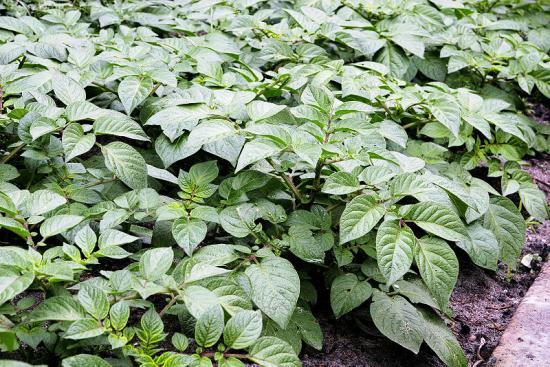
In this case, the top layer of earth means the earth at a depth of 10-15 cm. In order for these parameters to be met as accurately as possible, it is necessary walk-behind tractor place it on a stand of appropriate height and adjust the plow (its edge should reach the ground from the stand). And only after this the plow is placed in the ground at the beginning of the future bed.
It is very important to make the beds level. To do this, you can stretch a rope along the first furrow and focus on it. This little trick will ensure long, beautiful furrows, ideal for growing potatoes.
Planting potatoes
To do this, use a mounted potato planter or a trailer potato planter. To get a good harvest you should observe boarding frequency. The best ratio is 20 tubers per half meter. In this case, each plant will receive the required amount of sun and, at the same time, the planting area will be fully used.
There is also a little trick here: if you plant 5-10 legume bushes on the same half-meter, then the potatoes will be reliably protected from underground insects. Don't plant any more! Plants of the legume family secrete substances that, in high concentrations, will inhibit the growth of potatoes.
Hilling (processing row spacing)
If you follow the previous recommendations, you will get even spaces between the rows. This allows you to produce hilling walk-behind tractor. For this you will need two rippers and one hiller. They are installed on a walk-behind tractor - and that’s all, all that remains is to walk with the walk-behind tractor along the rows. With the help of a hiller, the earth will fall onto the bushes, which will lead to the desired effect.

This process allows moisture to linger long enough after watering, while simultaneously getting rid of weeds and protecting against the first frost.
Fertilizer application
A special attachment, with which fertilizers are applied during hilling, allows you to combine this with planting potatoes or with hilling. The fertilizer is simply poured or poured into a special tank. Thus, all efforts are reduced to a minimum and you save your time.
Potato harvesting
Using a walk-behind mower, potato tops are mowed, raked and removed from the site. Russian craftsmen found a way out by making a special device. This is a potato digger for a walk-behind tractor in the form of a “shelf” made of metal rods, which is fixed above a single-arm plow. When the walk-behind tractor moves, lumps of earth fall between these rods, and potato tubers, moving further, fall from above onto the ground.
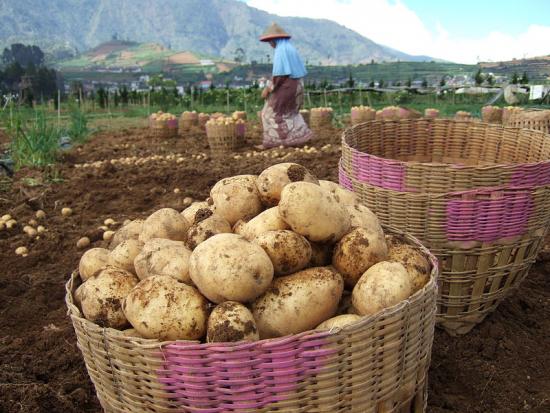
To use the attachment on a walk-behind tractor, potatoes are planted in straight rows with the same row spacing and at the same tuber planting depth.
Thus, the walk-behind tractor is an excellent tool for planting, processing and digging potatoes. Special devices make it possible to practically eliminate manual labor and, at the same time, obtain a large and high-quality harvest. Enjoy using it!



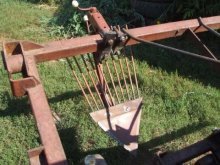
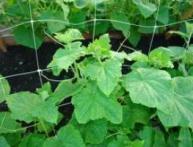
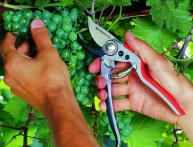
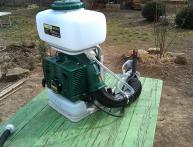
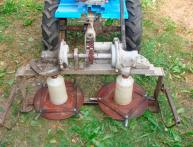

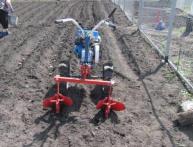
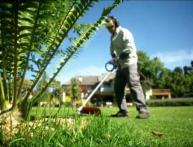
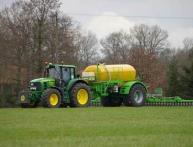
Comments
I agree that digging potatoes for a walk-behind tractor makes life much easier for people who grow potatoes, especially in large areas. The only thing I don’t like is that the potatoes dug up in this way are often “in the hole” from the iron bars.
Our family grows potatoes for sale and for many years we managed without a walk-behind tractor.We had to call all our relatives and friends for help, and work ourselves from dawn to dusk. everything changed with the acquisition of a walk-behind tractor. We didn’t master all the operations right away, there were a lot of mistakes, a lot of spoiled potatoes. but in the end we learned to use all the attachments efficiently. Now our family does not wait with apprehension for the time of harvest, everything goes without much stress.
But in our village we have a small vegetable garden, and so we still harvest the crops using the old method - with a shovel and with our relatives. Of course, the digger will make my parents’ work easier, but they are already used to it and do not accept new technologies(
Of course, for those who grow potatoes over large areas, a tiller for a walk-behind tractor is a must-have item. Even though our garden is small, we also bought a potato digger for our walk-behind tractor and have already tried it out. Now I know firsthand that it actually makes the job of harvesting potatoes a lot easier.